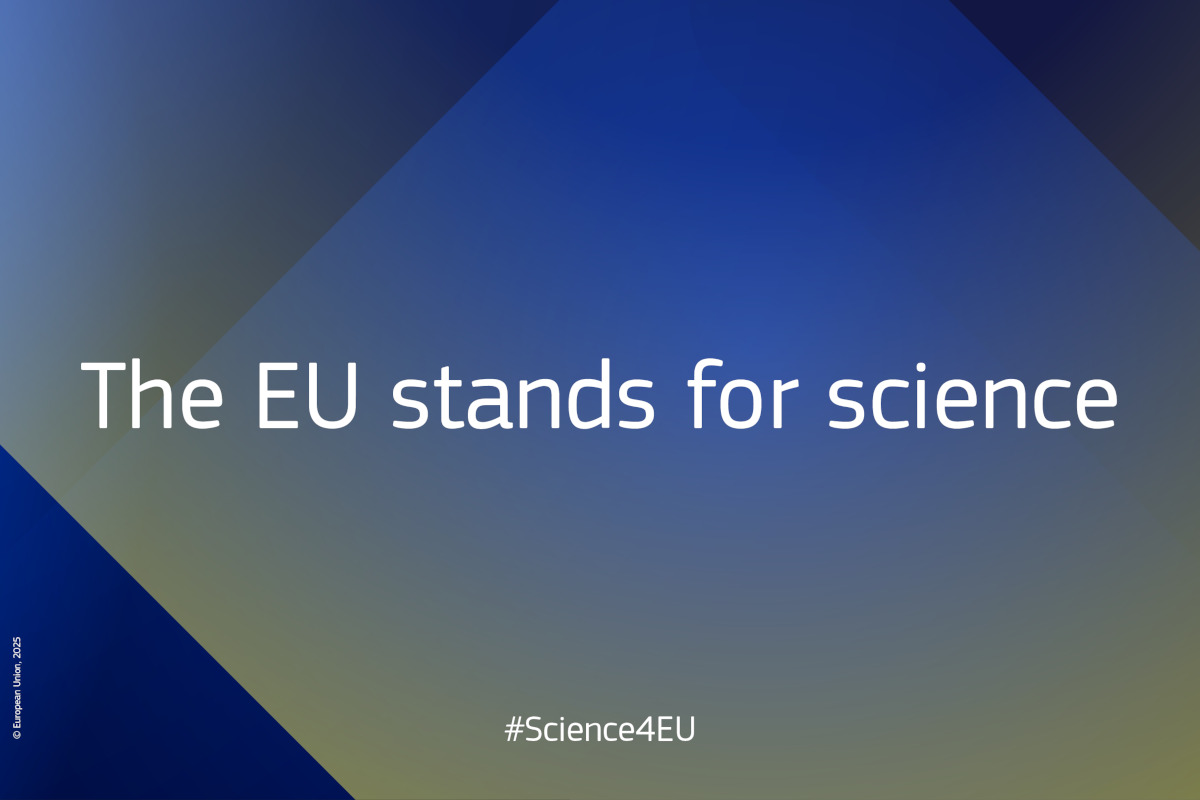EU-funded researchers and experts are joining forces across borders to combat child sexual abuse, exploitation and human trafficking using AI-powered solutions.
Special series

Science4EU
The Science4EU campaign shows how the EU stands for science. It shines a spotlight on the scientists, researchers, and innovators working with EU support to improve our lives and shape a better future for everyone.
Do you also stand for science?
Podcast
Media AV Portal Audio
More stories

EU-funded researchers are shedding light on how digital media use is impacting teenagers and what parents, teachers and policymakers can do about it.
Most popular
-
1By Michaela Nesvarova
-
2
-
3By Michaela Nesvarova
-
4By Sofia Sanchez Manzanaro
-
5
Top videos
Turning local know-how into European solutions for smarter bio-based farming
25 July 2025
Fighting fire with innovation: a pan-European push to tackle extreme wildfires
23 July 2025
Past articles
As electronic or e-cigarettes grow in popularity, scientists are racing to find out how they affect health, not just of users but for those around them.
Brand new materials that are just an atom thick are helping to roll out a revolution in electronics that researchers say is as significant as the move from valves to silicon chips.
Engineers at the Joint European Torus (JET) nuclear fusion experiment could be using augmented reality through Microsoft’s HoloLens technology to see where radiation hotspots are, according to Jonathan Naish, at the UK’s Culham Centre for Fusion Energy, who has developed an award-winning system to check exposure using virtual reality.
The familiar, or perhaps annoying, whirring of a refrigerator could soon be gone for good.
A laser-based broadband internet connection that could help to bridge the so-called digital divide, between people who have internet access and those who do not, has won its inventor first prize in the 2016 edition of the European Union Contest for Young Scientists (EUCYS).
In Germany, Dr Manuela Garnica Alonso peers into a massive machine of shining steel that sprouts wires, tubes, clusters of portholes, aluminium foil and industrial bolts.
A cutting-edge refinery is processing specially bred hemp and researching innovative new biomaterials that could help build future eco-friendly homes.
In today’s digital age, it can feel as though we are drowning in a deluge of data, and the scientific field is no different. According to a 2014 study, one paper is published every 30 seconds, and more than 70 000 papers have been published on a single protein, a tumour suppressor called p53.
The world’s first alien life form containment facility is under discussion in Europe as the European Space Agency (ESA) looks at ways to bring a sample back to earth from Mars.
Sheets of carbon an atom thick could soon double the amount of electricity stored in smartphone batteries, researchers believe, as 2D materials present a picture of the future of energy storage.
Following recent vehicle emission scandals, confidence in sustainable mobility has taken a big hit. But research and development could help the European transport sector get back on track and stay ahead of international competition, according to Maroš Šefčovič, Vice-President of the European Commission in charge of Energy Union.
Young researchers with a good idea should trust their collaborators and not be afraid to move outside their comfort zone, says Professor Hans Clevers, who has been named winner of the 2016 Körber European Science Prize which honours outstanding scientists working in Europe.
The amount of freshwater extracted from our rivers and lakes is concentrating pollution at such an alarming rate that it is dramatically reducing freshwater biodiversity, according to the world’s longest-running experiment looking at the problem. On top of that, researchers now say climate change is making the whole problem worse.
Come October, six of the world’s most advanced vehicles will race for glory over a track made of gold. Only you won’t be able to see the groundbreaking event, because each competitor will be just nanometres in size.
Bending and stretching 2D materials to change their properties could lead to ultra-small sensors that can help us understand how gravity works at the microscopic scale, according to Professor Kirill Bolotin from Freie Universität, Berlin, Germany, who leads the EU-funded Strained2DMaterials project to uncover what happens to 2D materials under strain.
This month, Horizon explores the weird and wonderful world of 2D materials. We talk to researchers revving up for a nano car race on a track the size of a flu virus, and others who are splicing atom-thick layers to create materials with on-demand properties. We find out how one scientist is bending and stretching 2D materials to create ultra-small sensors, and discover some of the other potential applications creating a buzz, including energy storage and high-power computing.
While most of us have experienced the frustration of not being able to join in with a conversation because we don’t understand what’s being said, weak foreign language skills can also prevent people from fully engaging in European society, particularly if they are poor.
Street lights may seem just part of the mundane backdrop of life, but many firms have been devising exciting ideas for powering them more cheaply and making them do far more than illuminate a dark road.
Imagine being able to hear, feel and think – but not see or move. Around you, you can hear doctors and family members saying that you cannot understand or make decisions.
Concentrated solar power (CSP) could have the potential to energise remote areas of the world, but it faces one major obstacle – the amount of water it uses. Now, thrifty water sprinklers, tailor-made rotors and hybrid sunlight-biomass boilers could cut the water bill of concentrated solar power and even help generate electricity when the sun doesn't shine.




























